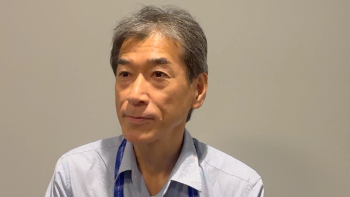
NeoALTTO: Pathologic Complete Response Linked With Improved Survival in HER2-Positive Breast Cancer
Patients with HER2-positive breast cancer who achieved pathologic complete response had significantly improved event-free survival and overall survival over patients that did not, according to the trial results presented at SABCS.
SAN ANTONIO-Patients with HER2-positive breast cancer who achieved pathologic complete response had significantly improved event-free survival and overall survival compared with patients who did not achieve complete response, according to the results of the NeoALTTO trial presented at the 2013 San Antonio Breast Cancer Symposium.
NeoALTTO (Neoadjuvant Lapatinib and/or Trastuzumab Treatment Optimization) was a phase III international trial that randomly assigned patients with HER2-positive breast cancer to treatment with HER2 targeting agents lapatinib and trastuzumab followed by combined treatment with paclitaxel or either drug alone with paclitaxel. Results
Martine Piccart-Gebhart, MD, PhD, chair of the Breast International Group, Brussels, presented results from the initial analysis of event-free survival and overall survival for patients enrolled in this trial.
“At approximately four years’ median follow-up, and in line with previous observation, dual HER2 blockade appears to provide superior benefit in terms of pathologic complete response, event-free survival, and overall survival in patients with HER2 positive, hormone receptor–negative tumors,” Piccart-Gebhart said during a press briefing.
Specifically, women who achieved a pathologic complete response had a significantly improved event-free survival (HR = 0.38; P = .0003) and overall survival (HR = 0.35; 0.15-0.70; P = .005) compared with those who did not have complete response.
However, Piccart-Gebhart cautioned that the trial was underpowered to detect moderate differences in event-free survival and overall survival, and recommended that conclusions on the effect of dual HER2 blockade on long-term outcomes be withheld until the presentation of the large ALTTO adjuvant trial expected at the 2014 ASCO Annual Meeting.
“If the results of both studies are in line with each other, and depending on the strength of the results, we could witness a new standard of care for managing primary HER2-positive breast cancer,” Piccart-Gebhart said.
In May 2012, the FDA issued a draft guidance about the use of pathologic complete response, defined as the absence of invasive cancer in the breast and axilla, as an endpoint to support accelerated approval of a drug for neoadjuvant treatment of high-risk, early-stage cancer.
Commenting on the results of the study, Jennifer Litton, MD, associate professor in the department of breast medical oncology at the University of Texas MD Anderson Cancer Center, said that based on the results presented by Piccart-Gebhart, pathologic complete response “continues to be a very valid surrogate endpoint” pointing to “how we can develop new drugs and get them to patients quicker with a smaller number of patients involved and cost.”
The NeoALTTO trial included 455 women with HER2-positive breast cancer randomly assigned to neoadjuvant lapatinib 1,500 mg/day, trastuzumab 4 mg/kg loading dose followed by 2 mg/kg weekly, or combined therapy for 6 weeks following by the same therapy plus paclitaxel for 12 weeks. After surgery, patients received 3 cycles of adjuvant FEC (fluorouracil, epirubicin, and cyclophosphamide) followed by the same assigned therapy for 34 weeks.
Results indicated that there was no significant difference in event-free survival between the treatment arms (HR = 0.78; 0.47-1.28; P = .33). Subgroup analysis indicated a possible advantage for combination therapy in patients with hormone receptor–negative disease.
When looking at overall survival, there were very few events at this point in time, Piccart-Gebhart said.
An analysis of survival outcomes by pathologic complete response showed significant improvements in event-free survival and overall survival for women who achieved pathologic complete response. Researchers also conducted subgroup analyses by hormone receptor status and saw a larger divergence in outcomes for patients with hormone receptor–negative disease who achieved pathologic complete response for both event-free survival (HR = 0.34; 95% CI, 0.17-0.63; P = .001) and overall survival (HR = 0.29; 95% CI, 0.11-0.62; P = .003).
Overall adverse events were consistent with the known safety profiles of lapatinib and trastuzumab established in other trials.
The study was supported by funds from GlaxoSmithKline. Piccart-Gebhart has received honoraria from Roche, and her institution has received research funding from GlaxoSmithKline.
Newsletter
Stay up to date on recent advances in the multidisciplinary approach to cancer.
















































































